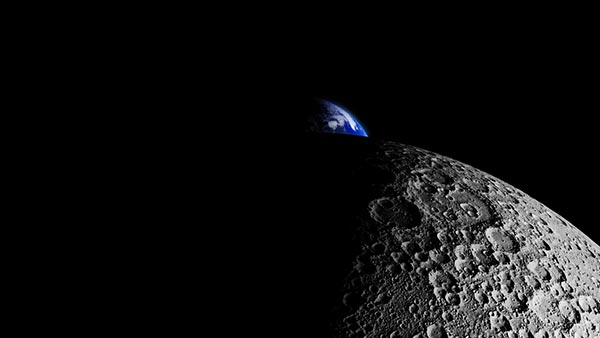
The agency's Executive Director for Science and Long-Term Programs Alexander Bloshenko announced the plan, which aims to reap scientific rewards such as learning more about the moon and deep space. "The location chosen for the base is the south pole of the moon. It has favorable relief and conditions, enough light for solar panels and constantly shadowed craters with ice reserves for fuel and raw material," Bloshenko said.
Bloshenko said that the lunar base will feature a nuclear-powered observatory with the task of tracking asteroids and comets that could pose a threat to Earth. The observatory will be installed with telescopes that will coordinate with a spacecraft in Earth's orbit to give warning about potential asteroid or comet collisions with the planet.
The moon base will be manned by robots, according to Bloshenko. Russian astronauts will only go to the area if there are tasks that are beyond the capabilities of the robots.
According to the Russian space agency official, they are currently conceptualizing the design of the robots.
"It will be a wheeled walking cart that can either roll on wheels or step over obstacles. Another conceptual design is a centaur-like robot mounted on a cart to perform complex planetary tasks," Bloshenko added.
In August 2019, Roscosmos sent a remote-controlled robot to the International Space Station (ISS). Named Skybot F-850 and also known as FEDOR (Final Experimental Demonstration Object Research), the robot was sent to assist researchers on the ISS.
Moreover, the Roscosmos director general Dmitry Rogozin revealed that the agency is currently developing two modules – named NEM-1 Science and Power Module – which are being designed to enforce the ISS. The modules will feature state-of-the-art laboratory facilities, additional living quarters and external solar panels.
"The operating time of the ISS is of course up to 2028. In contrast, the life of the modules is from 15 to 20 years," Rogozin said, adding that the modules could also be used in the development of the lunar base.
Russia is reportedly assessing how much future investment it wants to place in the development of the ISS and how much energy it wants to use in establishing a permanent presence on the moon.
Russia holds many ‘firsts’ in space missions
Once successful, the construction of the first base on the moon will be added to Russia's plethora of achievements in space exploration. (Related: Russians successfully grow edible food crops in space.)
Russia was the first country to send a man-made object to space on Oct. 4, 1957. The satellite, named Sputnik 1, stayed in Earth's orbit until Jan. 4, 1958.
The country was also the first to send a living thing to space when they sent a dog named Laika. However, the dog died during the mission. On August 19, 1960, the Russians tried again with a pair of female dogs sent aboard the Vostok spacecraft. The dogs, named Belka and Strelka, orbited the earth for 24 hours before returning to the planet safely.
On Sept. 14, 1959, Russia successfully sent the first human artifact to the surface of the moon through Luna 2. It was preceded by the Luna 1, which was the first human-made object to have orbited the moon.
On April 12, 1961, Russian astronaut Yuri Gagarin became the first human in space. Aboard a Vostok spacecraft, he orbited the earth successfully from 23,000 feet above the planet and he landed safely in a travel that lasted a total of 108 minutes from takeoff to landing.
The first woman in space was also Russian. On June 16, 1963, Valentina Tereshkova became the first woman in space and she spent three days in the Earth's orbit.
The other significant feats of Russian space exploration include being the first country to send a man to walk in space (Alexei Leonov, March 18, 1965) and the first to send a remote-controlled rover to a celestial body (Lunokhod 1, Nov. 10, 1970).
Visit Space.news for more on Russia's space missions and the latest space news in general.
Sources Include:
Please contact us for more information.























